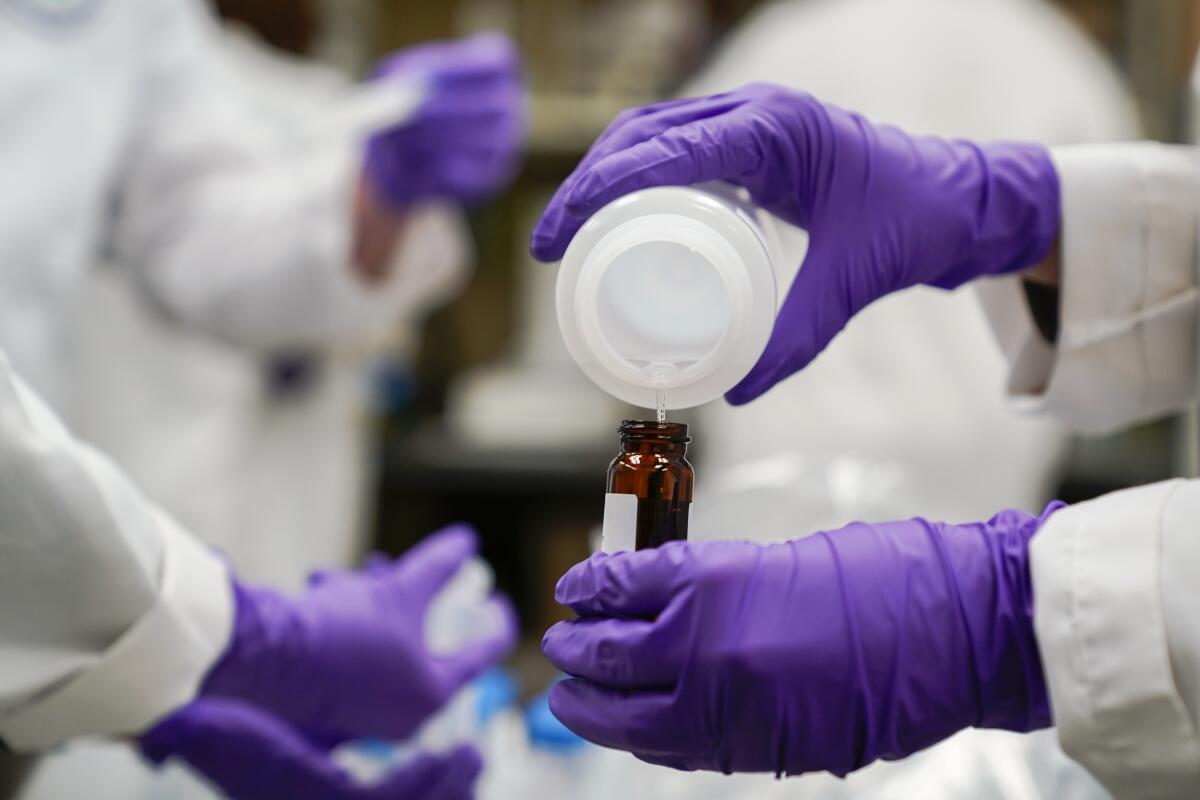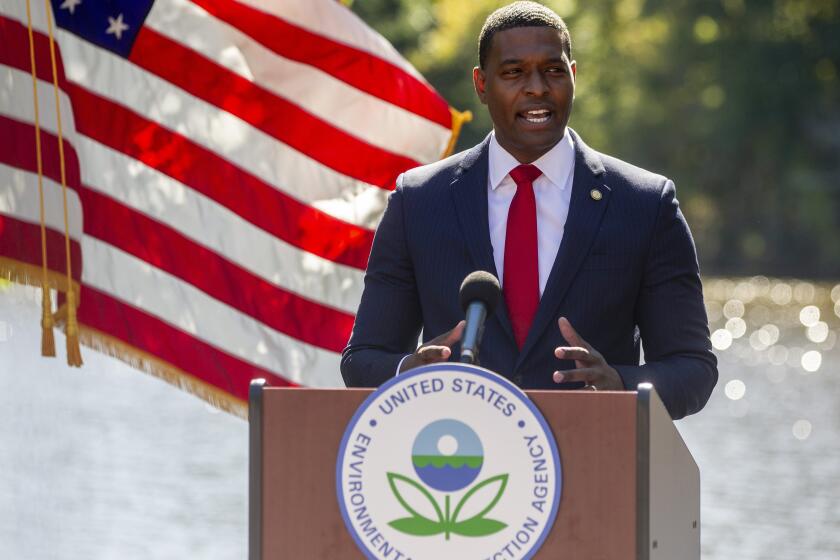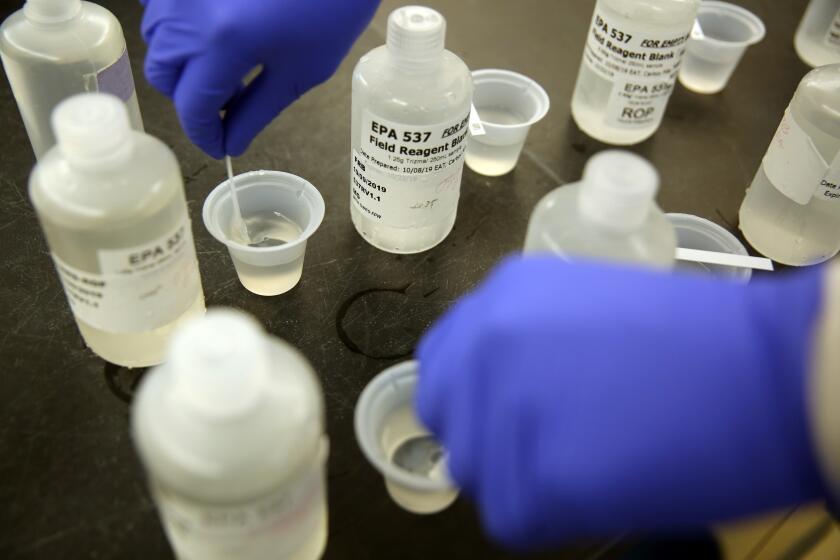3M reaches $10.3-billion settlement over ‘forever chemicals’ in drinking water systems

TRAVERSE CITY, Mich. — Chemical manufacturer 3M will pay at least $10.3 billion to settle lawsuits over the contamination of many U.S. public drinking water systems with potentially harmful compounds used in firefighting foam and a host of consumer products, the company said Thursday.
The deal would compensate water providers for pollution with per- and polyfluorinated substances, known collectively as PFAS — a broad class of chemicals used in nonstick, water- and grease-resistant products such as clothing and cookware.
Described as “forever chemicals” because they don’t degrade naturally in the environment, PFAS have been linked to a variety of health problems, including liver and immune-system damage and some cancers.
The compounds have been detected at varying levels in drinking water around the nation. The Environmental Protection Agency in March proposed strict limits on two common types, PFOA and PFOS, and said it wanted to regulate four others. Water providers would be responsible for monitoring their systems for the chemicals.
The agreement would settle a case that was scheduled for trial earlier this month involving a claim by Stuart, Fla., one of about 300 communities that have filed similar suits against companies that produced firefighting foam or the PFAS it contained.
3M Chairman Mike Roman said the deal was “an important step forward” that builds on the company’s decision in 2020 to phase out PFOA and PFOS and its investments in “state-of-the-art water filtration technology in our chemical manufacturing operations.” The company, based in St. Paul, Minn., will halt all PFAS production by the end of 2025, he said.
The EPA is proposing the first federal limits on harmful “forever chemicals” in drinking water, saying it could prevent thousands of illnesses.
The settlement will be paid over 13 years and could reach as high as $12.5 billion, depending on how many public water systems detect PFAS during testing that the EPA has mandated in the next three years, said Dallas-based attorney Scott Summy, one of the lead attorneys for those suing 3M and other manufacturers.
The payment will help cover costs of filtering PFAS from systems where it’s been detected and testing others, he said.
“The result is that millions of Americans will have healthier lives without PFAS in their drinking water,” Summy said.
Earlier this month, three other companies — DuPont de Nemours and spinoffs Chemours and Corteva — reached a $1.18-billion deal to resolve PFAS complaints by about 300 drinking water providers. A number of states, airports, firefighter training facilities and private well owners also have sued.
Environmental and health groups are pushing fast-food companies, supermarket chains and other retail outlets to remove PFAS from their packaging.
The cases are pending in U.S. District Court in Charleston, S.C., where Judge Richard Gergel is overseeing thousands of complaints alleging PFAS damage. A trial of a complaint by the city of Stuart in Florida had been scheduled to begin this month but was delayed to allow time for additional settlement negotiations.
Most of the lawsuits have stemmed from firefighter training exercises at airports, military bases and other sites around the U.S. that repeatedly used foams laced with high concentrations of PFAS, Summy said.
The 3M settlement is subject to court approval, he said.
3M’s website says the company helped the U.S. Navy develop foams containing PFAS chemicals in the 1960s.
California Atty. Gen. Rob Bonta announced that the state has sued the manufacturers of ‘forever chemicals’ such as PFAS, which are linked to cancer.
“This was an important and life-saving tool that helped combat dangerous fires, like those caused by jet fuel,” the company said.
3M said its participation in the settlement “is not an admission of liability” and said if it was rejected in court, “3M is prepared to continue to defend itself.”
The cost of removing PFAS from U.S. water systems eventually could go much higher than the sums agreed to in the settlements, Summy acknowledged.
“I’m not sure anyone knows what that ultimate number will be,” he said. “But I do think this is going to make a huge dent in that cost ... and you don’t have to litigate for the next decade or longer.”
More to Read
Sign up for Essential California
The most important California stories and recommendations in your inbox every morning.
You may occasionally receive promotional content from the Los Angeles Times.













